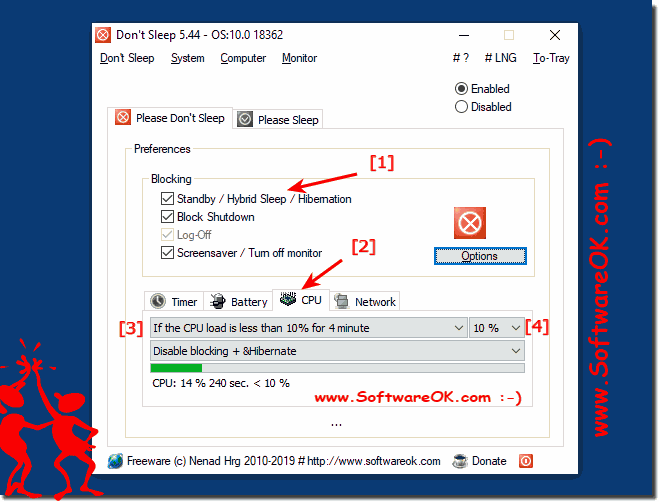


However, that early implementation of the technology didn't work with computers that had mechanical hard drives or hybrid storage, and it didn't give you as much control over the settings. Microsoft's first attempt at making PCs wake from sleep faster came with the introduction of Connected Standby mode in Windows 8. Resuming your PC from S3 sleep mode typically takes anywhere from 2 to 15 seconds, and fully resuming a PC from S4 hibernation takes longer, depending on the hardware and how much data was stored in a temporary file from the system memory.

Most current and recent Windows PCs use the S3 power state for default Standby or Sleep mode and the S4 power state when the PC goes into Hibernate mode. S4: This state is Hibernate mode, with the hardware powered off and the system memory saved to a temporary file. S3: This is the traditional Standby mode, with the CPU off and the RAM set to slow refresh. This power state has also largely been phased out in modern Windows. S2: This is a lower-power mode than S1, with the CPU off and the RAM refreshed. This power state has largely been phased out and is no longer used in modern Windows devices. S1: This is low-power mode with the CPU on (but set to stop executing instructions) and the RAM refreshed. However, the Modern Standby mode is listed as "S0 Low Power Idle." S0: Traditionally, this has meant "working" with the system fully running. Most of us are familiar with the classic "sleep mode" in Windows, but the reality is that Windows PCs traditionally supported up to six power states that average users rarely understood: The Surface Book 2 woke from sleep in under a second, while the Spectre x360 took 2 to 3 seconds. The store has only a handful of FTP apps, the kind of software many people use for uploading / downloading large files, and the one we tried didn't work at all.Įven if you aren't using the connectivity feature, Modern Standby provides much faster resumes. Unfortunately, none of the major browsers is a store app. Microsoft's documentation says that only Windows Store apps can take full advantage of Modern Standby, so we were surprised that Outlook, which is not technically a Store app, worked. When we initiated a download in the Edge browser, putting the system to sleep caused it to fail. However, emails that were in the middle of sending when we put the notebook to sleep did not go out. In both Outlook 2016 and Windows 10's built-in email client, we received emails with large attachments, even when the laptop was asleep. To see how well Modern Standby works, we performed some tests on a Surface Book 2 (13-inch).


 0 kommentar(er)
0 kommentar(er)
